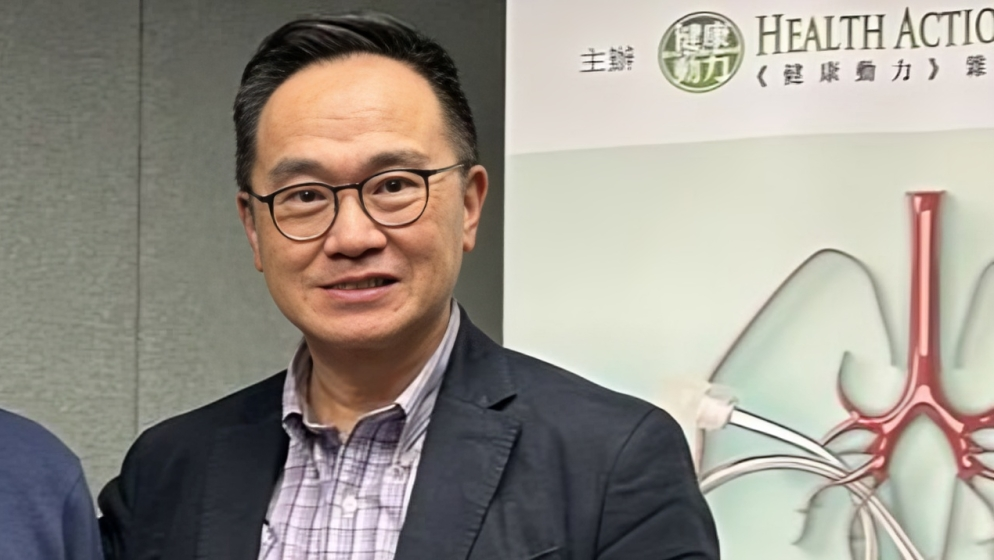Norman Ng, Director of Patient Advocacy and Public Affairs at Healthcare Thinkers, shared a post on LinkedIn:
“How should healthcare in Hong Kong develop? I asked DeepSeek :
Although Hong Kong’s healthcare system is known for its efficiency and fairness, it is in urgent need of systemic reform due to structural problems such as an ageing population, an increasing burden of chronic diseases, and an imbalance between public and private resources. Based on international experience and local challenges, the following proposals put forward the direction of reform and specific recommendations:
1. Diversification of Financing Models: Learning from the Experiences of Switzerland and Singapore
1. Introduction of Tiered Financing Mechanism
At present, Hong Kong’s medical expenditure accounts for half of the government and half of the private expenditure, but the financing model is single and there is no risk-sharing mechanism. You can refer to Singapore’s “3M System” (MediSave, MediShield, MediFund) to establish a personal medical savings account (similar to MPF), with social insurance and low-income subsidies to form a multi-level protection.
2. Strengthening the attractiveness of VHIS
The existing VHIS scheme has limited effectiveness, and it is necessary to expand the coverage (e.g. to cover more chronic disease drugs), reduce the deductible, and integrate the payment standards for public and private services, so as to encourage the public to switch to private services to alleviate the pressure on the public sector.
3. Reform the structure of public revenue
Although fee adjustments to be implemented in 2026 (e.g., grading fees for emergency departments, increasing drug fees) can curb abuse, they need to be accompanied by a simultaneous expansion of exemptions (e.g., relaxation of the low-income threshold) to avoid overburdening vulnerable groups.
II. Integrating Public and Private Resources: Promoting Collaboration and Diversion
1. Expanding Public-Private Partnership (PPP)
Through the procurement of private services, such as referral of patients with stable chronic diseases to private doctors in the community for follow-up consultation, which will be paid for by health insurance. This will free up public specialist outpatient care resources (currently with a waiting time of up to 2-3 years) and revitalize the surplus capacity of the private healthcare sector.
2. Establish a hierarchical diagnosis and treatment system
Strengthen the role of primary care, promote the first diagnosis system of family doctors, and avoid the direct influx of patients with mild symptoms to emergency departments or specialists. Referring to the NHS model in the UK, the government subsidises primary clinics and establishes an electronic health record sharing platform to enhance referral efficiency.
3. Solving the manpower shortage: opening up and training in parallel
1. Accelerating the introduction of non-locally trained doctors
The Medical Registration Ordinance amended in 2021 has allowed qualified overseas doctors to practise in Hong Kong, subject to a simplified approval process (e.g. recognition of qualifications from outside the Mainland and the Commonwealth) and the provision of salary and career development incentives to attract talents from the GBA.
2. Additional Medical School and Training Places
Increasing the number of medical students to 650 by 2025 is still insufficient, and a third medical school (as proposed by the Hong Kong University of Science and Technology) and expanding the training of nurses and allied health professionals should be planned to cope with the shortage of doctors by 1,600 after 2030.
4. Addressing the challenges of population ageing and chronic diseases
1. Strengthening Community Health Networks
Upgrading the District Health Centre into an Integrated Health Centre for the Elderly to integrate chronic disease management, rehabilitation and social welfare services. Referring to the Japanese region, including the care system, home medical care is provided on a community-by-community basis.
2. Promoting digital health and telemedicine
Develop an e-Health Platform to enable public-private data sharing, and introduce AI-assisted chronic disease monitoring (e.g. diabetic retinopathy screening) to reduce complication rates.
V. Institutional Innovation and Regulatory Reform
1. Establishment of an independent medical regulatory body
At present, the power of the medical committee is concentrated in the local doctors’ groups, which is prone to form an exclusive monopoly. There is a need to establish an independent regulator to balance professional autonomy with the public interest, and to strengthen quality scrutiny of private services.
2. Promoting a “value-based” payment model
Borrowing from the “Pay-for-Performance” scheme in the United States, the current volume-based subsidy will be replaced by linking public hospital funding to patient health outcomes (e.g. chronic disease control rates).
Fusion and localization of international experience
Mark Britnell’s “ideal healthcare system” needs to be tailored to local conditions:
– Fairness: The NHS concept of universal coverage needs to be integrated with the realities of Hong Kong’s tax system to avoid over-reliance on government subsidies.
– Efficiency: The efficient operation model of India’s private healthcare sector can inspire Hong Kong to optimise the use of private resources.
– Innovation: The US medical R&D capacity can be introduced through GBA collaborations (e.g. the Clinical Trial Collaboration Platform) to enhance Hong Kong’s status as an international healthcare innovation hub.
Epilogue
The key to Hong Kong’s healthcare reform is to balance “fairness” and “sustainability”, which requires breakthroughs in multiple dimensions such as financing structure, resource integration, human resource policy, and technology application. While learning from global experience, it is necessary to face up to the conservative nature of the local medical community and the urgency of the ageing population, and gradually realize the transformation of the “grassroots-based, public-private partnership” system through policy guidance and public participation.”
